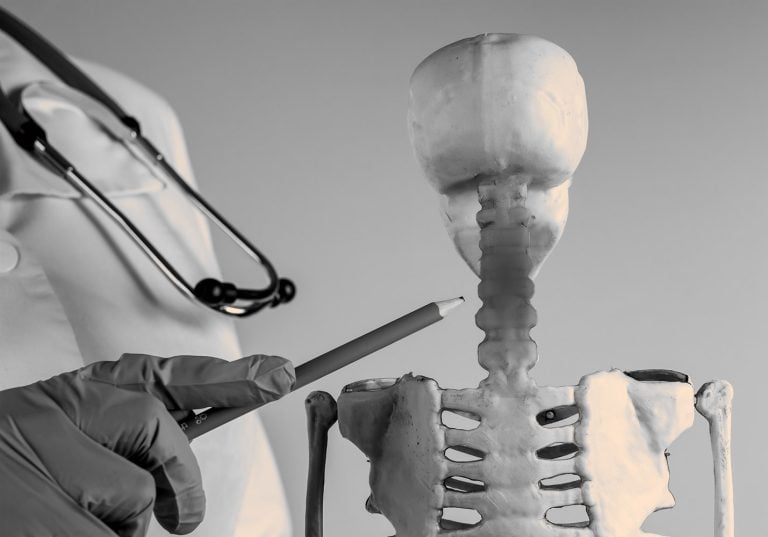Whiplash injuries, those sudden jerks or impacts that strain the neck, can unleash a cascade of symptoms. One of the most distressing outcomes is the onset of relentless headaches. These headaches often emerge within hours, days, or even minutes after the injury, regardless of how severe it initially appears. What sets them apart is that they don’t fade away – instead, they intensify over time, becoming more frequent, longer-lasting, and more painful. Surprisingly, many people experiencing these headaches have never had a history of such headaches in themselves or their families.
So, what’s behind these excruciating post-whiplash headaches, and how are they connected to Whiplash Associated Disorder (WAD) and Cranial Cervical Syndrome (CCS)? Let’s delve into the fascinating world of the upper cervical spine’s anatomy and its profound impact on these debilitating conditions.
The Brain’s Blood Supply
To understand the root cause of these issues, we need to explore the brain’s blood supply. Normally, the brain relies on four major vessels to receive oxygenated blood.
The front part of the brain, the anterior portion, is nourished by two carotid arteries. Problems like strokes or transient ischemic attacks (TIAs, sometimes called reversible mini-strokes) can occur when cholesterol builds up in these arteries.
The back part of the brain, the posterior portion, receives its blood supply from two vertebral arteries. These are the arteries that hold the key to understanding and treating whiplash-related issues.
The Role of Vertebral Arteries
The vertebral arteries run alongside the cervical spine, or the neck bones. In fact, they travel through channels within each cervical vertebra, known as the foramen transversarium. When these arteries reach the uppermost cervical vertebra, C1 (also known as the Atlas), they curve up and over the Atlas’s ring-like structure and enter the skull. Inside the skull, they supply oxygen to the back part of the brain.
These vertebral arteries play a vital role in supplying oxygen to four critical areas: the upper cervical spinal cord, the cerebellum (which controls balance and fine motor skills), the occipital lobes (responsible for vision), and most importantly, the brainstem.
The Brainstem: Command Central
The brainstem is often described as the core of the brain. It’s responsible for processing all the information our brains receive from the outside world and from inside our bodies. Think of it as a hub where data travels to and from, much like transmission lines.
The brainstem serves a multitude of functions. It controls our level of consciousness, keeping us awake and aware. In severe trauma cases, damage to the brainstem can lead to a coma. It also regulates vital functions such as blood pressure, pulse, breathing, sweating, digestion, bladder control, and sexual function, among others.
Furthermore, the brainstem manages all sensation and controls cranial nerve functions, which govern head-related functions like vision, facial sensation and movement, swallowing, eye movement, and tearing.
The Delicate Balance: Vertebral Arteries and the Cervical Spine
Now, consider this delicate balance: all four critical areas of the brain, especially the brainstem, depend on oxygen supplied by the two vertebral arteries. These arteries, each measuring less than an eighth of an inch in diameter, are intimately connected to the cervical spine, the bones in the neck.
Under normal circumstances, ligaments connecting the cervical spine to the skull limit the motion of each vertebra relative to the others. Additionally, the vertebral arteries run through channels on the side of each vertebra. This structure usually prevents excessive stretching or tension on the vertebral arteries during neck and head movements.
The Whiplash Effect: Ligament Damage and Abnormal Tension
In a whiplash injury, these ligaments can get damaged, sometimes severely. This is particularly true for the Alar ligaments and Transverse ligaments, which connect C2 (the axis), C1 (the Atlas), and the Occiput (the base of the skull). As mentioned earlier, specialized imaging like the Cervical DMX and Upright MRI reveals that whiplash injuries can lead to abnormal lateral (side-to-side) sliding of C1 on C2.
This lateral sliding exerts abnormal tension on the vertebral arteries. In surgical observations, it’s been directly observed that the flow of vertebral arteries is disrupted by the excessive movements of C2 and C1.
The Vascular Nature of Headaches
This abnormal tension on the vertebral arteries may be the origin of the severe, intractable headaches experienced by many after whiplash injuries. These headaches are often described as pounding and throbbing, resembling “common migraine” headaches. This description aligns with the idea that these headaches result from waves of vascular contraction and dilation.
Furthermore, the abnormal tension on the vertebral arteries disrupts blood flow, particularly affecting the small arteries that penetrate into the brainstem. This disruption, notably in the segment of the vertebral arteries before they merge higher in the brainstem to form the basilar artery, temporarily deprives the brainstem of oxygen. This deprivation is likely responsible for various unusual symptoms experienced in CCS. In essence, patients are encountering transient, reversible mini-strokes in the brainstem, often referred to as “posterior fossa TIA’s,” with the posterior fossa being the part of the skull housing the brainstem.
The Role of Inflammation and Pressure
But there’s more to the story. Damage to the Alar and Transverse ligaments can lead to inflammation at C1-C2 in the spinal canal. A mass can develop in this area, known as C1 Capsulosynovitis. Additionally, many whiplash patients develop a sinking of the posterior part of the brain, including the cerebellum, into the opening at the base of the skull known as the foramen magnum. This phenomenon is called Cerebellar Tonsillar Ectopia.
Together, these factors cause significant crowding and pressure on the brainstem and vertebral arteries, especially during neck movements like flexion, extension, and rotation. This pressure leads to transient brainstem dysfunction, resulting in the diverse and unusual symptoms of Cranial Cervical Syndrome.
The Role of Cerebrospinal Fluid (CSF)
Lastly, there’s another factor that may contribute to the syndrome. Cerebrospinal fluid (CSF), which nourishes and protects the brain and spinal cord, is produced within the brain’s ventricles. It circulates around the brain and spinal cord before being reabsorbed on top of the brain.
After an upper cervical spine injury, such as in whiplash, the opening at the base of the skull (the foramen magnum) can become compressed. This compression can interfere with the flow of CSF around the brainstem and spinal cord, potentially playing a role in the development of Cranial Cervical Syndrome.
In conclusion, the intricate interplay between the upper cervical spine’s anatomy, ligament damage, vascular dynamics, inflammation, and CSF flow can help explain the complex symptoms experienced by individuals with post-whiplash intractable migraine headaches, Whiplash Associated Disorder, and Cranial Cervical Syndrome.




